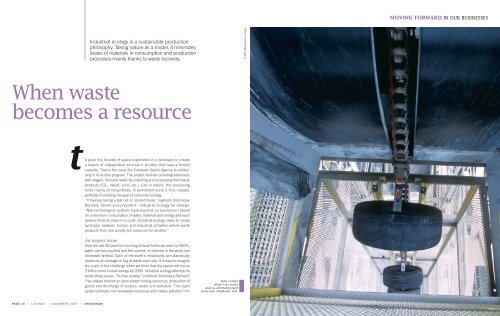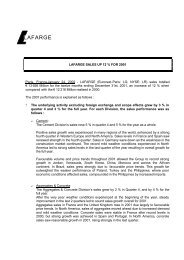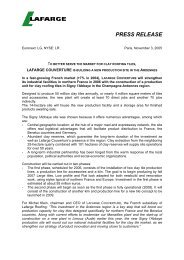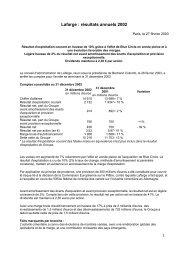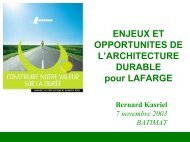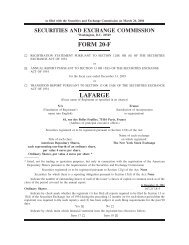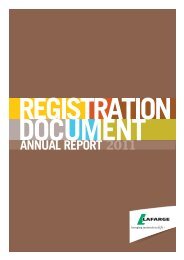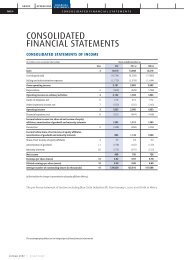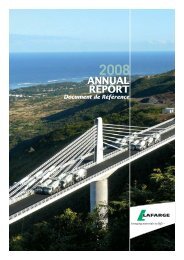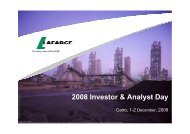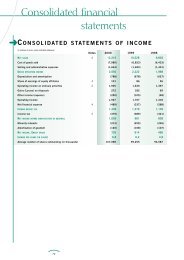The magazine - Lafarge
The magazine - Lafarge
The magazine - Lafarge
You also want an ePaper? Increase the reach of your titles
YUMPU automatically turns print PDFs into web optimized ePapers that Google loves.
P A G E 2 0 | L A FA R G E | N O V E M B E R 2 0 0 7 | C R E S C E N D O<br />
Industrial ecology is a sustainable production<br />
philosophy. Taking nature as a model, it minimizes<br />
losses of materials in consumption and production<br />
processes mainly thanks to waste recovery.<br />
When waste<br />
becomes a resource<br />
t<br />
o push the bounds of space exploration it is necessary to create<br />
a means of independent survival in shuttles that have a limited<br />
capacity. That is the issue the European Space Agency is addressing<br />
in its Aurora program. <strong>The</strong> project involves providing astronauts<br />
with oxygen, food and water by collecting and processing their waste<br />
products (CO 2, sweat, urine, etc.). Like in nature, this processing<br />
relies mainly on biosynthesis. A permanent cycle is thus created,<br />
perfectly illustrating the goal of industrial ecology.<br />
“It involves taking a leaf out of nature’s book,” explains Dominique<br />
Bernard, Senior vice-president – Industrial Ecology for <strong>Lafarge</strong>.<br />
“Natural biological systems have reached an equilibrium based<br />
on a minimum consumption of water, materials and energy and each<br />
species finds its place in a cycle. Industrial ecology seeks to create<br />
synergies between human and industrial activities where waste<br />
products from one activity are resources for another.”<br />
An urgent issue<br />
Over the last 50 years the burning of fossil fuels has risen by 500%,<br />
water use has doubled and the number of vehicles in the world has<br />
increased tenfold. Each of the earth’s inhabitants simultaneously<br />
produces an average of 1kg of waste each day. It is easy to imagine<br />
the scale of the challenge when we think that the planet will house<br />
3 billion more human beings by 2050. Industrial ecology attempts to<br />
tackle these issues. “Human activity,” continues Dominique Bernard,<br />
“has always favored an open system linking resources, production of<br />
goods and discharge of surplus, waste and pollution. This open<br />
system exhausts non-renewable resources and creates pollution.”•••<br />
Tulsa cement<br />
plant’s tire stocks<br />
used as alternative fuels<br />
in the kiln. Oklahoma, USA.<br />
© ARR Mediatheque <strong>Lafarge</strong><br />
MOVING FORWARD IN OUR BUSINESSES


